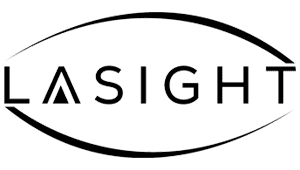LA Sight LASIK Results
The most important thing anyone interested in LASIK wants to know is, “What results can I expect?”. We publish a statistical review of our outcomes on an annual basis. We invite other surgeons and laser centers to analyze and publish their results. In that way, we can learn from, and help, each other. Ultimately, this kind of candid disclosure and public accountability serves the interests of our profession and all patients seeking LASIK care.
When we talk with any prospective client seeking vision correction, we try to qualify our own use of statistics as follows:
- Statistics are designed to analyze trends in a population or a group. They should not be used to predict future results in individual cases. For example, if the incidence of serious complications in LASIK is 1 in 15,000, that is extremely low for the overall population. But if you are that 1 case, then for you the complication rate is 100%.
- Regrettably, some people use statistics to distort or misrepresent the truth, typically to their advantage. Do not base any decision, especially a surgical one, on statistics alone. See our Finding a Good LASIK Surgeon page discussing other qualifications to seek and facts to investigate.
- Laser correction for nearsightedness (myopia) is significantly different from correction for farsightedness (hyperopia). The shape and pattern of laser sculpting is different, and the long-term stability is different. Therefore, it makes more sense to us to present outcomes data for near- and farsightedness separately. That’s why there are two separate tables below.
Results Treating Nearsightedness, with or without Astigmatism
|
Eyes |
% |
|
| Total # Treated |
2,462 |
100% |
| Follow-Up Data Available |
1,192 |
48.4% |
| 20/15 or better |
215 |
18.0% |
| 20/20 or better |
1,121 |
94.1% |
| 20/25 or better |
60 |
5.0% |
| 20/30 |
0 |
0% |
| 20/40 or worse |
0 |
0% |
Data analysis period: January 2022 through March 2023. Qualifications: We reoprt on visual acuity outcomes for 1,192 eyes treated for myopia or myopic astigmatism, out of a total number treated of 2,462 in this reporting period. Some clients do not return for adequate follow-up evaluation (despite our best efforts!) during industry-accepted reporting windows, typically 4 – 10 weeks for myopic treatments, and 12 – 16 weeks for hyperopic treatments. We cannot include those outcomes, even if 1-day and 3-week post-op visions were superb.
Results Treating Farsightedness, with or without Astigmatism
|
Eyes |
% |
|
| Total # Treated |
54 |
100% |
| Follow-Up Data Available |
26 |
48% |
| 20/15 or better |
2 |
7.6% |
| 20/20 or better |
24 |
93.4% |
| 20/25 or better |
2 |
7.6% |
| 20/30 |
0 |
0% |
| 20/40 or worse |
0 |
0% |
Data analysis period: January 2022 through March 2023. Qualifications: A total of 2,516 eyes are reported, 1,192 eyes (97.8%) having treatment for nearsightedness with or without astigmatism, and 54 for farsightedness (~2.1). This is in slightly more skewed that the distribution of these optical conditions in the normal adult population. We are quite a bit more cautious in supporting interest in farsightedness for several reasons; see Farsightedness Treatment Concerns.
The information below may clarify or additionally explain the results in the tables above.
- The current retrospective review analyzed all eyes treated in the period January 2022 through March 2023. Some eyes were excluded from analysis for one of four reasons:
- If the targeted goal of treatment was for clarity at near range (“monovision”), then uncorrected distance acuity would not be an appropriate measurement or indicator of outcome. there were 76 eyes in this category in this review (3%);
- Some eyes did not have 20/20 correctable visual acuity before treatment, so did not have the potential to recover 20/20 (or better) acuity after treatment; and
- Some patients did not return for follow-up visits at 1 month or 3 months after surgery (5 eyes), when visual acuity and prescription measurements are stable.
- This review included patients treated with all ranges of myopia (up to about -10.00 D in this series) and all ranges of astigmatism (up to about -6.00 D in this series).
- In the farsightedness treatment group, patients with less than 6 weeks of follow-up data were excluded.
Take a look at our great reviews and then schedule your consultation
